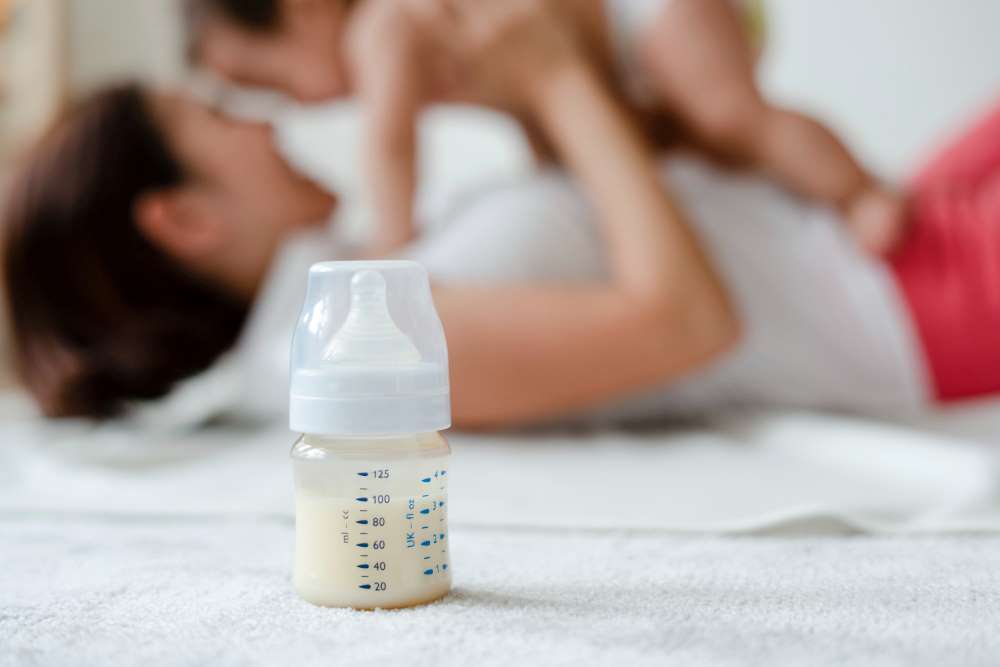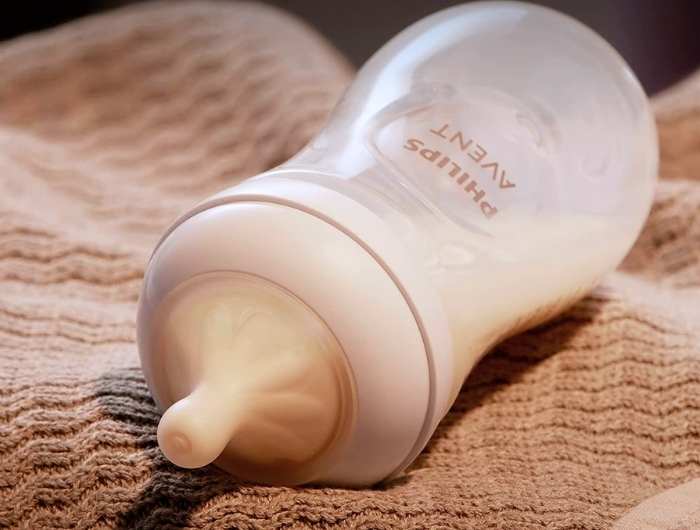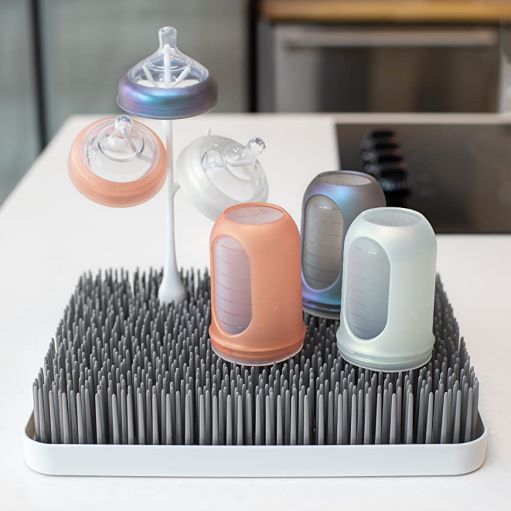In this blog post, we will share some tips and advice on how to transition breastfed babies to formula fed babies smoothly and safely. We will also share some benefits and challenges of formula feeding, and how to overcome them. We hope this post will help you make an informed decision that works best for you and your baby.
Why Transition From Breastmilk To Formula?
There are many reasons moms may decide to switch from breast milk to formula. Some of the most common ones are:
- You are going back to work or school and you find it hard to pump and store breast milk.
- You have medical issues that affect your milk supply or your health.
- You have not enough breast milk supply or your breastfed baby is not gaining enough weight on breast milk alone.
- You want to share the feeding responsibilities with your partner or other caregivers.
- You feel stressed, exhausted, or overwhelmed by breastfeeding.
- You simply prefer formula feeding over breastfeeding and want to find the best formula for sensitive tummies.
Whatever your reason for the transition from breastmilk to formula is, remember that it is your choice and you should not feel guilty or pressured by anyone. Formula feeding can be a healthy and satisfying option for you and your baby, as long as you follow some basic guidelines.
If you are unsure about your choice take a look at our comparison of the advantages and disadvantages of both breastfeeding and formula feeding.
How To Choose A Baby Formula
There are many types of infant formula available in the market, and it's confusing to pick the best one for your baby. Here are some factors to consider when choosing a top formula for babies:
Main Ingredient
Most formulas are made from cow's milk, but there are also goat's milk, soy-based, hydrolyzed, or amino acid-based formulas for formula fed babies who have allergies or intolerances to a cow's milk based formula or soy. Talk to your pediatrician about which type of formula is suitable for your breastfed baby and find out which is the best natural formula for babies.
Form
Formula can come in powder, liquid concentrate, or ready-to-feed form. Powder is the cheapest and most convenient option, but it requires careful measuring and mixing with water.
Liquid concentrate is more expensive and needs to be diluted with water before feeding. Ready-to-feed is the most expensive and convenient option, but it has a shorter shelf life and needs to be refrigerated after opening.
Brand
There are many brands of formula in the market, and they may have different ingredients, additives, or quality standards. Do some research on the reputation and reviews of different brands before buying.
You can also ask your pediatrician for recommendations or samples of different formulas.
If the first formula you try doesn't work out there are many alternatives available. Learn more about how to switch formulas and possible side effects of switching.

How To Transition From Breastmilk To Formula Gradually?
Switching from breastmilk to formula cold turkey is not a good idea. The best way to transition from breast milk to formula bottle feeding is to do it gradually over a period of weeks or months.
Alternating breastmilk and formula will help your baby adjust to the taste and texture of formula, and prevent digestive issues such as gas, constipation, or diarrhea.
It will also help your body adjust to the reduced demand for breast milk, and prevent engorgement, mastitis, or clogged ducts. Here are some steps you can follow to transition from breast milk to formula gradually:
Step 1: Know When to Start
Introducing formula to your baby's diet is a big decision, and there's no one-size-fits-all answer for when to start. Some babies may be ready as early as a few weeks old, while others may not be interested in formula until they're several months old.
Every baby is different, so it's important to pay attention to your little one's hunger cues and behavior to determine if they're getting enough breast milk supply. If you feel you're struggling to keep up with your baby's needs or if you simply want to try something new, it may be time to think about making the switch to formula feeding.
Step 2: Choose the Right Formula
When it comes to choosing the right formula for your baby's needs, there are a few things to keep in mind. For starters, you'll want to consider your baby's age and nutritional needs, as different formulas are designed for different stages of infancy.
Cow's milk-based formula is the most common type, but there are also soy-based formulas, hypoallergenic formulas, and more. It's best to consult with your pediatrician to determine which formula is the best fit for your little one.
Step 3: Start by Mixing Breast Milk And Formula
One important thing to keep in mind about transitioning from breastmilk to formula is that it should be a gradual process. To help ease your baby into the transition, start to mix breast milk and formula in the same bottle, gradually increasing the amount of formula over several days or weeks.
This will help your baby get used to the taste and texture of formula without experiencing any sudden changes in their diet.
As your baby becomes more accustomed to the formula, you can start offering the formula bottle separately from breast milk. Start by replacing one breastfeeding session per day with a formula bottle.
Choose a time when your baby is not very hungry or fussy, such as mid-morning or mid-afternoon. Offer the bottle before or after nursing, depending on your baby's preference.
Step 4: Slowly increase Bottle Feeding Sessions
Increase the amount and frequency of formula feeding gradually. Replace one more breastfeeding session per day with a formula bottle every few days or weeks, depending on your baby's readiness and your comfort level.
You can also mix breast milk and formula in the same bottle to make the transition easier for your baby.
You can also try to let your baby have a piece of clothing that smells like you near them when they bottle feed. This can help them feel more comfortable because they are used to your scent when they breastfeed.
You can also hold your baby close to your skin when you give them the bottle, just like you do when you nurse them.
Step 5: Slowly decrease Breastfeeding Sessions
Reduce the duration and intensity of breastfeeding sessions gradually. Also, gradually decrease the number of breastfeeding sessions they have each day. As you increase the amount of formula feeding, you can shorten the time you spend nursing your baby or offer less breast milk per session.
This can help your breast milk supply adjust to the change in demand and prevent engorgement and discomfort. You can also use techniques such as massage, compression, or hand expression to reduce the amount of milk you produce.
It's important to do this slowly to avoid any negative effects on your milk supply, so try cutting out one breastfeeding session per day initially, and then gradually decrease from there.
Step 5: Watch for Signs of Intolerance
As with any new food, there's always a chance that your baby may experience intolerance or allergy symptoms when transitioning from breast milk to formula. Monitor your baby's reaction to the baby formula.
If your baby accepts the bottle well, you can continue with the same amount and frequency of formula feeding.
If your baby rejects the bottle or has any adverse symptoms such as vomiting, rash, or colic, you may need to try a different type of formula or consult your pediatrician. Sometimes, your doctor may recommend a different type of baby formula that's better suited to your baby's needs.
Step 6: Stop Breastfeeding
Stop breastfeeding completely when you and your baby are ready. There is no set timeline for when you should stop breastfeeding completely. Some moms may choose to stop when their baby is 6 months old, while other moms wait until their baby is 12 months old to change their baby's diet.
Step 7: Support Yourself
Finally, you should be supportive and loving with yourself. Transitioning from breastmilk to formula can be an emotional process for both you and your baby. You may feel guilty, sad, or anxious about giving up breastfeeding.
You may also worry about losing the bond with your baby. Remember that you are doing what is best for you and your baby, and that you can still bond with them in many other ways. You are a great mom.
Conclusion
In conclusion, transitioning from breastmilk to formula can be a big change for both you and your baby. Remember to go at your own pace. Introduce formula to your baby's diet and decreasing breastfeeding sessions slowly. Don’t feel pressured to follow a strict schedule or compare yourself to other moms. Do what works for you and your baby.
Choosing the right formula is also key to a successful transition. Consult with your pediatrician and find a formula that meets your baby's nutritional needs. And always keep an eye out for any signs of intolerance or allergic reactions, so you can make any necessary adjustments to your baby's diet.
Transitioning from breastmilk to formula can be challenging, but it can also be rewarding. You can enjoy more flexibility, convenience, and bonding time with your baby. You can also share the feeding responsibility with your partner or other caregivers.
By taking it slow, being patient, and following your baby's cues, you can help ensure a smooth and successful transition to formula feeding. You are a wonderful mom and you deserve to be proud of yourself.
Thank you for reading Mother Bear Reviews, your favorite parenting blog!








